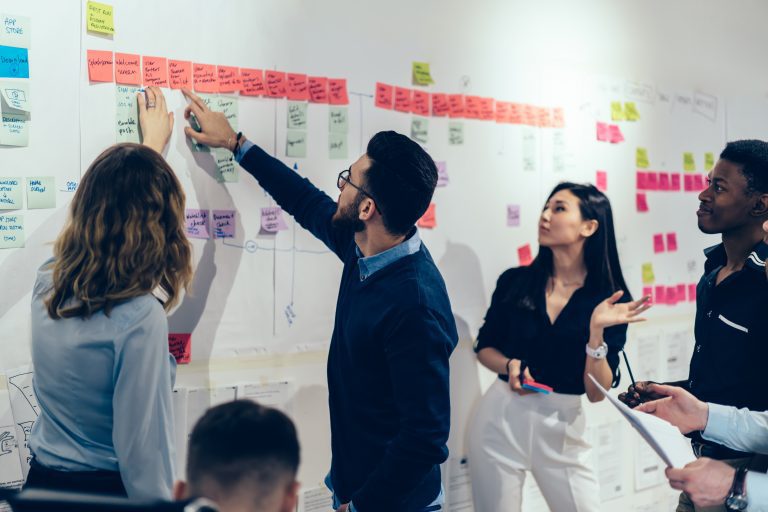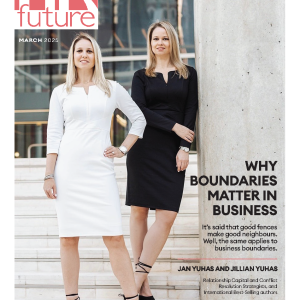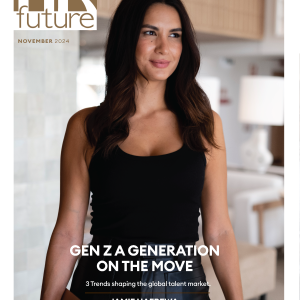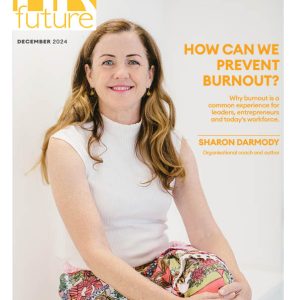Featuring guests Trish McFarlane and Meg Bear with host Tamara McCleary
Employee experience has been an overlooked area of corporate development for most organizations. While every department has been concerned with customer experience, the employee counterpart has largely been solely HR’s responsibility. For many, the term “employee engagement” conjures up images of casual Friday, pizza parties, or a ping-pong table in the cafeteria.
That perception is changing, however. Engaged employees are 40% less likely to turn over, 12 times more likely to be brand advocates, and potentially deliver three times more revenue as their less-engaged colleagues. It’s clear that employee experience is an organization-wide concern.
As the current crisis redefines the way we work, keeping employees engaged is even more challenging – and even more crucial to an organization’s success.
It’s time to develop employee experience as a discipline, much as businesses have done with customer experience. We need strategic, technology-enabled employee experience planning that covers the entire employment lifespan, from pre-hire through exit and beyond.
The very nature of work is changing, and social distancing is just one of many factors driving the change. HR can help lead the organization to new ways of supporting employees, boosting productivity, and creating a more agile and flexible workforce.
This episode, our expert guests explore how HR and departmental leaders can support employees through this current crisis, developing programs that will support a continually evolving “new normal.” They dig deep into how technology supports employee experience, but also what new skills, processes, and mindsets are needed to make the most of the technology.
Listen to Learn:
- How to better support and engage remote workers
- How to engage employees across the employee lifecycle
- How emerging trends will affect employee experience
- How HR can set a vision for the overall direction of the organization
Need more resources to better support and engage your workforce? Learn more about SAP SuccessFactors.
Did you miss our last episode?
Check out our previous episode with guests Tim Crawford, Isaac Sacolick, Andreas Welsch, and Timo Elliott: “The Future of Automation: Intelligent ERP.” Click here to listen.
Episode 7 Transcript
Tamara McCleary: Welcome to Tech Unknown, a podcast to prepare your organization for the tech-centered future of business. I’m Tamara McCleary, CEO of Thulium.
Our big umbrella topic this season is data. We’re digging into how sharing and activating data across the organization can increase efficiency, reduce costs, and improve experience.
This episode, we’re talking about using data to improve employee experience. Now, everyone’s talking about customer experience these days. And we should be talking about it – in fact, we mention it on at least four episodes of the podcast – however, we also need to take into consideration how our employees feel about their work and the organization they work for.
After all, our employees are ultimately responsible for customer experience. If they’re happy and supported, they’re more apt to pass along these feel-good emotions to your customers. People need work that is meaningful and real and to see their contribution to the whole. If our employees are not engaged in their work, [are] stressed-out, unclear about their individual contribution, and perhaps even feeling alone or abandoned… well, brace yourself for unhappy customers.
Oh, and by-the-way, this isn’t just a touchy-feely soft-skills piece; you knew I’d have to back up my assertions on a podcast devoted to data. Employees who are engaged at work and reporting positive experiences at work are 40% less likely to turn over, 12x more likely to advocate for the brand, and deliver 3x more revenue. How’s that for aligning feelings to the business’ bottom line?!
So, how can your business cultivate excellent employee experience? Well, one way to do it is to empower them. Here’s Candy Wood, my chief of staff at Thulium… Candy, how do you feel about working for Thulium?
Candy Wood: Considering that I’ve been working from home in my pajamas since before it was trendy, I love working for Thulium!
Tamara: Thanks Candy! Can you tell, as a digital agency, we already had a work-from-home workforce, empowering our employees in their choice of work attire? Okay pajamas aside, you can’t solve this problem by simply throwing money at employee experience. As with customer experience, crafting a successful and productive employee experience needs to be approached strategically, as a discipline, with an ongoing plan supported by technology.
Trish McFarlane has spent her entire career helping businesses recruit and retain top talent. She’s currently the CEO and principal consultant at H3 HR, as well as a blogger and keynote speaker. Here’s Trish on what businesses have been missing when they think about employee experience:
Trish McFarlane: For me, it’s really more that holistic look at an organization and the entire employee lifecycle. So much like a human resources leader would be thinking of the entire employee lifecycle, we need to be approaching our technologies and the way that we use them to bolster that with that same lens.
But I think what’s happened is that over the years, once someone’s on board, you know, the shine kind of wears off and we just let them flounder. And I think part of that goes back to, in different organizations, it’s sort of organized differently. And so in many, you know, there is a recruitment team and then there’s a human resources team, and so that hand-off has always been a little bit awkward, you know. Who owns that phase once someone has accepted an offer and not yet become an employee officially on day one? And so, I think, sometimes technology is starting to enhance that gap in a way that makes the person feel connected and valuable, so there’s been a bigger focus on the onboarding.
But overall, as you become an employee, I think organizations are starting to think more about, okay, all of the things that we promised you during your candidate experience, all of that wealth of information, all of those videos, all of the, maybe, you know, job shadowing, job previews, simulations, things like that that used to maybe end once you were sort of signing on the line, those things, because of the technology advancements, are now back, I guess, under the spotlight, if you will. So people who maybe had felt like they were left alone once they were hired are now feeling much more included.
And so, I think, just because people are starting to mention it more, from a technology standpoint, it’s going to gain more importance. And I think that the people who are actually making the solutions will start getting pushback from the customers saying, “Hey, you know, what can we be doing to do a better job of this?”
Tamara: Human resource leaders have always been concerned about employee experience, of course. Keeping people happy and productive is part of the job description. But the way we think about how to create these positive experiences is changing rapidly – just as the nature of work itself is evolving. Here’s Meg Bear, SVP of Product, Engineering, Operations at SAP SuccessFactors:
Meg Bear: Yeah, what we’re observing with most of our HR leaders that we talked to is employee experience is really, really top of mind for them. And in this construct, it comes to a few different things. It comes to the fact that we are now at a place where workers are our digital natives. They’re used to technology, and they have high expectations of what that technology can do. We’re also at a place where globalization has created a broad set of norms that aren’t just local or regional, but they tend to start to be accelerating around the globe. And so what we’re finding is that the employee experience becomes that linchpin that helps make business work. And so if you think about that as an opportunity, one of the things that comes top of mind is you recognize that you can lean on your workers to help you figure out not just how to get the work done today, but to co-create your processes, to co-create your your business objectives, to really maximize every worker’s potential towards the business objectives.
We’ve been working towards this for a while with concepts like strategic HR, but today we recognize that it can’t really be top-down anymore, it has to be bottom-up, culturally. And the way that people want to work is they really want to contribute because we know that when people have autonomy and agency, they are much more engaged. And engaged workers have a bigger impact on business revenue. In fact, engaged workers have at least a three-X impact on revenue for their for their workforce. And so what we’re finding is that taking employee experience and making that a priority creates an opportunity to really compete in this global workforce of change. And so that’s where we’re seeing HR organizations taking this seriously and thinking about how employee engagement can help them serve their customers better and drive better business results.
There are plenty of factors that contribute to a positive experience that fosters employee engagement: benefits, salary, managerial style, corporate culture, whether your dress code includes pajamas… But for Trish, it comes down to one key component: A sense of belonging and being valued.
Trish: Really, for me, the employee experience management is really there to provide that consistent approach to showing a person their worth in your company. The biggest disconnection is when someone is hired and either the role changes before they start, or maybe it’s a little different than what they were told or what they thought they were walking into. So the real value of an employee management experience is that connection that you have to the company because without that, I think that’s where you start seeing turnover starting within the first 90 days when someone just doesn’t quite feel that connection.
From a personal standpoint, I think also there is this sense of belonging that you have to feel. For example, you hear a lot about diversity and inclusion efforts in organizations. This goes back my entire career. So at least 25 years we’ve been talking about this. And that’s all fine because I think it’s getting us to the point we are now. But when I think about your employee experience, it really means that just because you were hired for diverse…the diverse perspective you bring, just because you are included in a team or a group, it doesn’t actually mean you feel like you are belonging to that group.
And so the difference right now with this focus on employee experience from an individual standpoint is you get that sense of belonging. Like, why am I here? How do we make money? What’s my role in helping that along? Or what’s my role in helping care for our customers or our clients? I think that’s what the focus is on now.
So I think that’s why it comes down to you really have to make sure that every single individual feels they understand why they’re there. Because, again, if I’m a manager and I don’t feel that connection, how in the world am I going to help anyone on my team, anyone that you hire for me, to feel that connection? You know, we’ve worried a lot about engagement, and I do feel like maybe that’s the shift. It’s not so much about engagement. It’s about connection. Because you certainly can’t be engaged if you’re not even connected.
Tamara: If we’re going to talk about connection here in early 2020, we must address the elephant in the room.
We would be remiss if we didn’t discuss the global crisis that is reshaping and changing, at least in the near-term, the way that people work. There’s a new norm creating fresh working paradigms. For instance, how can you keep employees connected if they can’t come into the office? The work-from-home, future of work, and the gig economy discussions were already quite the popular topics before the pandemic, but now the reality of a remote workforce is playing a major role in keeping businesses running. Here’s Meg:
Meg: I think we’re we’ve just moved to a whole new definition of what does it mean to work from home, the concept of whether you can work remotely is no longer one about technology enablement. It’s much more about the human side of working from home. And so today we find ourselves in this extreme experiment of everyone working from home and creating a sense of community, and collaboration becomes much more about the human element than about the technology element. So we are lucky to have great video conferencing, grateful for sharing great collaboration tools, an amazing amount of things that you can do remotely and digitally. And so what we’re having to add back are the human pieces. How do you connect with people? How do you understand mood and personality and cultural specifics and what’s happening in a given location? And I think what we’re finding today with our sheltering in place, is that that piece is really coming to the fore. And we’re seeing a lot of great innovation that helps us connect with each other in a way that isn’t just about business but it’s also about the human touch as well.
Tamara: Technology isn’t what keeps remote workers – or even onsite workers – it’s feeling connected and valued. Technology is an exquisite tool we can use to facilitate these human connections and interactions:
Trish: As someone who just has immersed myself in HR technology since I left the practitioner role, I still strongly believe that it’s the people interactions that are much more powerful than the technology can ever be. The technology is really just there to enhance, and enable, and empower the actual people doing the work and making these connections.
So when I think about how technology can able…can enable that, I think it really starts with looking at the various processes, that you’re having people come into your company, that you’re having them join teams, that you’re having them receive feedback or work with your customers, all of those little bits and pieces.
So, for example, it’s as fundamental as using really solid, you know, payroll and benefits technologies that are nuanced in sort of integrating how the people work, who their teams are, who their supervisors are. It also has to have a technology that will sort of allow you to have a unique sort of almost, like, customized approach to your culture. So I don’t mean, like, customized technology, but actually helping you think differently about the interactions, sort of those little micro-interactions within your organization. And I think we need to start looking at features and functions within a certain solution. That’s where you start kind of marrying those up on how that can work.
It’s definitely not one-size-fits-all, and I think, whenever I think back to being an HR leader myself when I was buying technologies, both big and small, I was really just looking for sort of that out-of-the-box solution that was going to solve all my problems. And I think now the narrative is what has changed. And maybe that’s helped by, you know, the industry itself and all of the… all the people that contribute to it. But it’s really now, I think, focused more on as a buyer.
Tamara: I’m seeing clear parallels between how marketers facilitate customer experience and how HR can facilitate positive employee experience. In both cases, it’s about using data to identify touchpoints – points of interaction where you can make a difference. Then it’s using technology to deliver customized experiences to those points of interaction, in a way that feels more human than robotic.
The parallels between marketing and HR don’t stop there. Just as marketers have to think about the entire lifecycle of a customer – from awareness to purchase and beyond – HR leaders have to be mindful of the employee lifecycle. For Trish, that cycle starts before a candidate even considers applying for a job.
Trish: So you might start saying… start by saying, “We’re going to look at our passive candidates. We’re gonna look at the pool of people that we have,” whether that’s maybe in a talent community, or maybe it’s just past applicants that were not selected. Whatever the means, right? So you’re gonna look at them first and you’re gonna say, “Okay, what can we do with the technology? Is there a new process maybe we can put in place to do outreach to them?” you know.
One of the things, I’ll give you an example, that I hear a lot about from a trend perspective this year is the idea of sort of teaching or almost up-skilling potential candidates before they ever become candidates. You know, there are a large number of people that never quite make it into your pipeline all the way, and it’s because maybe they were either self-selected out or just selected out because of the technology because they missed a certain skill or two. Well, those might be very easy to develop if you knew about it. So when you talk about measurement, measuring things like that. What are the skills that we’re consistently seeing our applicants, or passive candidates even, not having? As a company, can we offer, maybe, video content, maybe written content, just to sort of help those people along?
I mentioned active candidates. Same thing there. You can be providing, using your technology, you know, different types of interactions maybe than, as an organization, you’ve ever thought to before just because now you’re freed up. Your processes are streamlined and running more smoothly with the technology so that when they become a new hire, you can then really stop focusing so much on the things you know technology does well like filling out your new-hire paperwork, getting all the forms submitted, getting the payroll started, right?
Those things are sort of pretty easy once you’ve… once you get the person hired, but you can then shift your focus maybe to the areas you’re not thinking about, which is, how do I get someone really integrated into a team? What does that look like, you know? As an HR person for almost 20 years, that was always in the back of my mind when we were hiring people, but I didn’t quite understand or have technology at the time to enable that very easily. Now, when I’m out in the space, I see that technology can absolutely enable some of those communications, those interactions.
And that goes all the way through to, like, the alumni phase, right? So once someone has decided to leave the company or maybe even… maybe they were terminated, and it’s, you know, five years later and they’re the perfect person to come back, whatever the case may be. But it’s about that continuum of information and connection that we didn’t really focus on even five years ago.
Tamara: The changing nature of work is more than an HR issue, of course. These changes are sending shockwaves up and down organizations, through every department. Digital transformation is inextricably tied to the way people work, and how our workflows and processes evolve.
For that reason, Meg says, HR is poised to take a larger leadership role within the organization.
Meg: Yeah, you know, again, I think we’re all in an experimentation phase right now, because of the fact that this has been a dramatic shift. And so a couple of things that I’ve seen happen really well, both here at SAP and in the global HR community, is really HR taking a leadership role in not only helping to redefine processes, as it relates to doing them globally remotely, but also creating structure around both communication and systems and processes and tools. Because what we’re finding is that now that we’re all working remotely, we need a different way to access it. We need a different way to access things that we might have normally done inside the office, and so HR is stepping out in front and helping to define that.
The other thing that they’re doing in a really thoughtful way is bringing forward access to benefits and opportunities that might not have been as top of mind in the past – things like wellness and emotional health. Things like making sure that everybody understands their benefits, their ability to take sick leave, and recognizing that a lot of people have having to shift their working hours and to be able to support their families, to be able to support their children doing distance learning.
So HR has had to step forward in being really flexible about both the policy side and the communication side so that everybody understands what’s available to them, so that managers on the ground are able to really connect with their team and offer them the kind of support that they might not personally be equipped to have to offer, and that they understand what the envelope is for both legal compliance as well as the human-interaction side of being able to support people in this period of transition. And I think what’s interesting about HR taking that lead is that this is an opportunity that the HR community has been looking to provide from the beginning, the ability to have a seat at the table and to really make a difference in business. And so this big shift in what we’re all trying to do to react to this global requirement of sheltering in place has given us our chance to show what we can really offer to an organization. And I think that this is going to be the future where HR will be directly helping to mobilize the workforce for the needs of the business, taking the human piece, taking the operational piece, and bringing them together in a way that really helps people thrive.
What I’m seeing in 2020 – and I expect in 2021 – is that this shift in HR’s role in bringing the human element back to business, but taking a leadership position in change management and transformation for companies overall. Because what we’re finding is HR is exactly the right group to do this to bring both the human element, the technology element, the quantitative element to show what’s happening in the organization. To the business to help them make good decisions, and to help them thrive in this period of change and uncertainty, to create constructs that people get, to create opportunities for people based on these changes, and to help manage the emotional piece of everybody trying to figure out how to compete in what is a very volatile time.
I think this really puts the concept of agility and how we deliver services to the forefront, thinking about not just defining the perfect process, but being able to adapt processes for the needs of the moment. And then to figure out what about those changes are things that really help the business and which things aren’t working. And that’s where you really need to bring feedback back into the mix. Having an opportunity for the voice of every employee to be directly connected to how you improve your business is what’s going to differentiate the opportunities of the near term and the long term.
Tamara: The technology that facilitates all of this, is a platform for human experience management, or HXM. It’s a solution that brings together analytics and workforce planning, talent management, payroll, employee experience – the works. With a comprehensive suite of solutions in place, you can create a positive feedback loop. You can monitor morale, solicit feedback, test new programs and optimize existing ones, and measure how your efforts are working at improving employee engagement.
The remaining obstacle, of course, is making sure employees actually take advantage of the technology to make their voices heard. But Trish feels it’s just a matter of consistency and time.
Trish: Right. And I think, you know what? When you use your technology in a way that just becomes so natural and such a part of their day that they’re not even thinking about it, that’s where you’re really going to see that impact. Because right now, we’re still…we’re still trying to figure out how do we infuse technology. I think if we fast-forward just a few years, things move so fast, I think we’re starting to get there. Because we’re seeing that infusion of technology into our personal home life day today, and so it’s just natural. Now that we get comfortable there, it will be more comfortable in the workplace.
Tamara: Once employees get comfortable with HXM technology, and HR leaders are helping steer the organization from an employee-centered perspective… where are they steering to? What’s the end goal? Here’s Meg with a look at the biggest possible picture.
Meg: Yeah, so people, if you take this to its next logical extension, and you start to think about the fact that the pace of change is accelerating, the engagement of employees is critical. You start to look out to the future and recognize that it’s not about skilling up for a single problem, but it’s about building resiliency.
It’s about building agility into your workforce end-to-end so that you can identify and satisfy and fill skills gaps ongoing to help you compete in your market. And so the way that we’re seeing this kind of show up is really a rethinking all of the pieces that we thought were well understood in how business works and how people progress in their careers. So it used to be you would come in with a certain set of skills, you would progress through a career through a very linear path, and then eventually you would get to your top end of experience and then ultimately retire; we find that that’s not how business works today. Today, people are moving and changing roles very rapidly. And not only are they changing formal jobs, they’re creating much more informal jobs.
They’re working in agile teams, they’re working in small groups that are not only defining the work, but helping to figure out what skills they need to get that work done. And they’re doing this in a much more collaborative way. And so we see that, in the future, work is much more driven by the employee, it’s much more self-organizing. It’s much more collaborative, and it is changing rapidly. And so what we need to think about when we think about technology is bringing that agility into the process flow. So instead of defining something, rolling it out, and then letting it run forever, like we did in the early days of technology, instead, what we’re doing is we’re testing things. We’re getting feedback, we’re co-creating it, we’re evolving it, we’re changing it, and we’re doing it again. So everything that’s part of that thought process of an agile development flow is really starting to be part of how business works, creating the idea that it’s not about making it perfect. But it’s about bringing those feedback loops and constantly having a growth mindset. How can we get better? What can we do better? And how do we as a group evolve and move with that? So it’s a big shift. It’s a big shift in what does it mean to lead an organization, and it’s a huge shift in what kinds of technologies you put in place when you recognize that what you’re really building for is change.
Tamara: Employee experience is more than keeping workers happy in the short-term. It’s even more than increasing productivity, reducing turnover, and boosting revenue – though all of these are byproducts of having engaged employees.
As Meg observed, the ultimate goal of strategic human experience management is to transform the way your employees work – and in the process, the way your organization runs. It’s about creating a work environment that fosters and rewards creativity, agility, and innovation.
HR leaders, now is your time to shine.
Thanks for listening to Tech Unknown. And thanks to my guests Meg Bear and Trish McFarlane. Please subscribe on iTunes, Google Play, or wherever you get your podcasts.
I’m Tamara McCleary and until next time: Stay sharp, stay curious, and keep exploring the unknown.
Tamara McCleary is CEO of Thulium, a social media analytics and consulting agency, driving Smart Social through proprietary data analytics and award-winning storytelling. Tamara ranks in the top 1% in influence globally. Named the #1 most influential woman in MarTech by B2B Marketing, recognized by Entrepreneur Magazine as one of 10 Online Marketers to watch, and named Top Digital Marketer by Brand 24 in 2019. Featured multiple times in Forbes for her pioneering influencer marketing strategies on social media for B2B and Enterprise, Tamara serves as a unique advisor to leading global technology companies such as Verizon, IBM, Mercer, MMC, SAP, Dell EMC, and AWS.
























